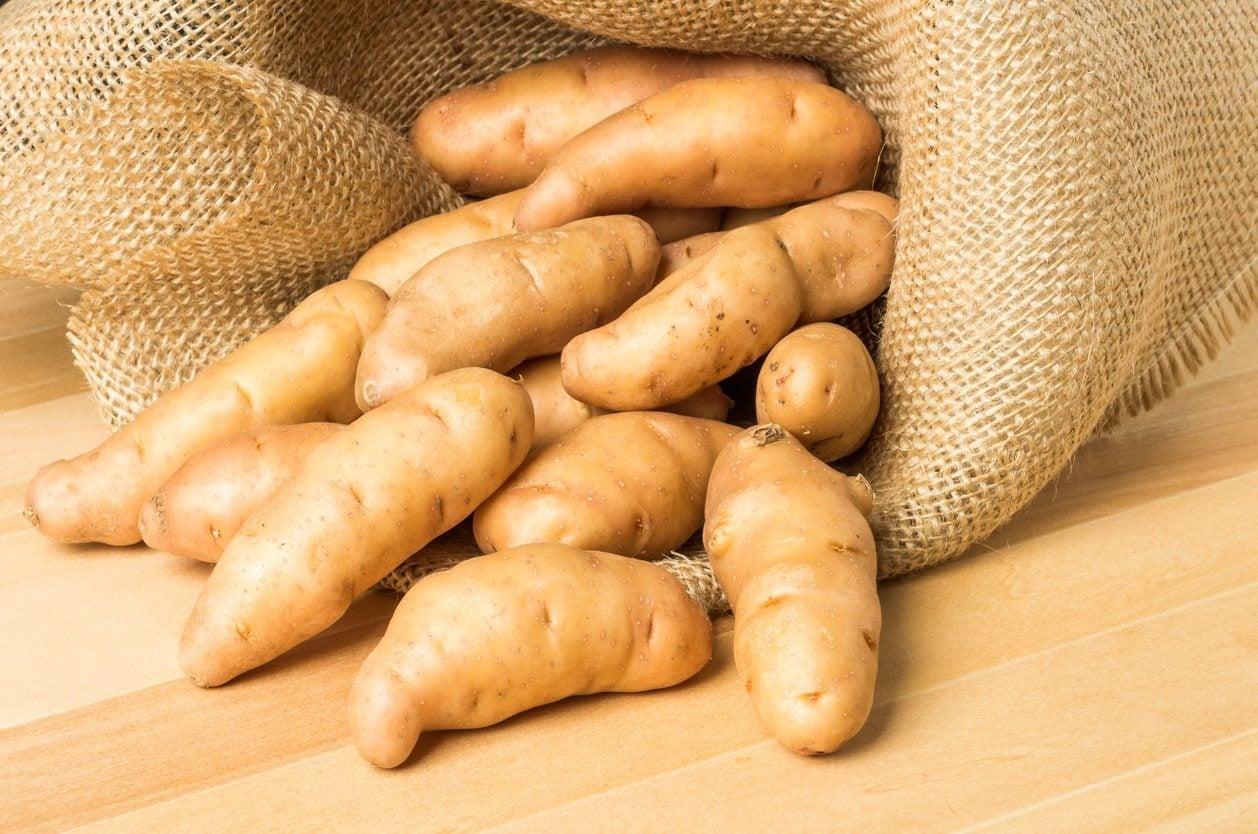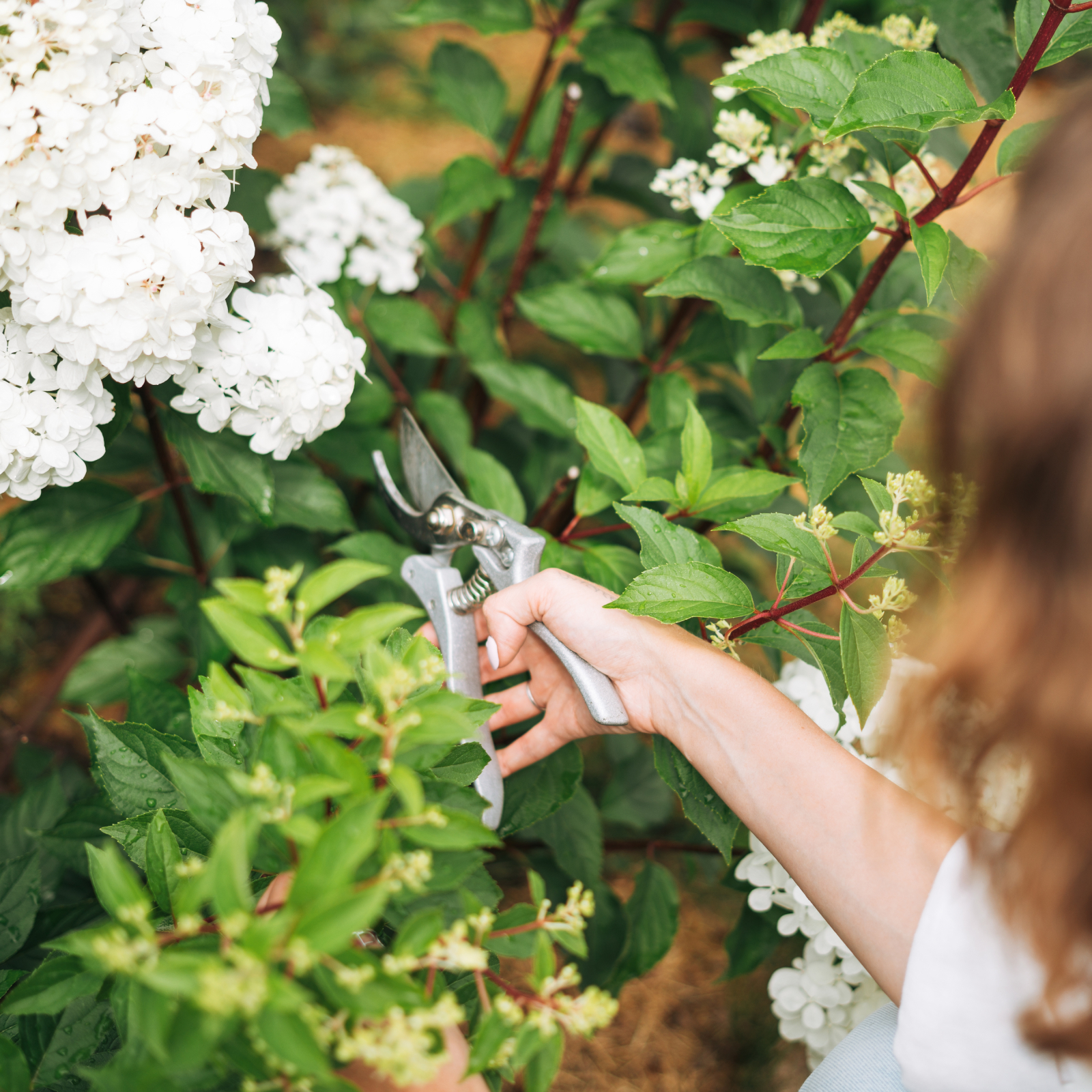What Are Fingerling Potatoes: Tips For Growing Fingerling Potatoes

Have you noticed that potatoes have moved beyond baked, split, and buttered? For some time now, potatoes have taken on a kaleidoscope of colors, shapes, and sizes. Many have them have always been around but just fell out of favor. Take fingerling potatoes, for instance. What are fingerling potatoes? What are fingerling potato uses? Read on to find out how to grow fingerling potatoes and other fingerling potato info.
What are Fingerling Potatoes?
Fingerlings, like most potatoes, originated in South America and were brought to Europe. European immigrants brought them to North America. They are heirloom potatoes with long, knobby, finger-like shapes. Some say they look like adorable, chubby baby fingers, but some of them more resemble the gnarled fingers of a Disney witch. To each their own. Regardless of how you view them, the fact is that these spuds are delicious and are featured more often with restaurant cuisine, but they may be found at the local grocers too. They are naturally small when mature with a thin skin and smooth, moist texture.
Fingerling Potato Info
Fingerling potatoes often come in colors such as yellow, red, and even purple. Scientists have shown that these colors are more than just pleasing to the eye. Brightly colored crops have more nutrients than their drab counterparts, so eating fingerlings will provide you with an extra helping of phytonutrients, the natural compounds found in fruits and vegetables that promote good health. Yellow fingerlings produce carotenoids or pro-vitamin A, and the red and purple varieties produce anthocyanins, which act as antioxidants and fight free radicals that, in turn, may offer anti-inflammatory, anti-viral, and anti-cancer benefits.
Fingerling Potato Uses
Due to their thin skins, fingerlings do not need to be peeled. They work well in any way a potato can be used-- from roasted, baked, broiled, and grilled to steamed, sautéed, and boiled. They complement salads, purees, soups, and sauces.
How to Grow Fingerling Potatoes
If you’ve seen fingerlings at the grocers or the farmer’s market, then you know that they cost more than the basic baking potato. This is no doubt because the thin skins make them less storable than other types of potatoes. No worries, you can easily grow your own. It’s no different than growing any other potato. Some gardeners begin growing fingerling potatoes in summer for a fall harvest that can be kept throughout the winter months. This works well for folks that live in warmer regions, but for those in colder areas, plant them in early spring. They take 120 days from planting to harvest. Select disease free certified seed potatoes. There are many varieties to choose from including:
- Russian Banana
- Purple Peruvian
- Rose Finn Apple
- Swedish Peanut
- All Blue
- Princess La Ratte
Prepare a bed for your spuds that is deeply dug and free of large debris. It should be moderately fertile with a pH of 6.0 to 6.5. Plant the seed potatoes two weeks after the last frost-free date for your area. Plant them 2 to 4 inches (5-10 cm.) deep and a foot (31 cm.) apart in rows that are about 30 inches (76 cm.) apart. As the plants grow, hill up around them with soil to keep the spuds from getting green. Potatoes do best in cool, moist soil, so mulch the hills with hay or straw to keep them cool and retain moisture.
Gardening tips, videos, info and more delivered right to your inbox!
Sign up for the Gardening Know How newsletter today and receive a free copy of our e-book "How to Grow Delicious Tomatoes".

Amy Grant has been gardening for 30 years and writing for 15. A professional chef and caterer, Amy's area of expertise is culinary gardening.
-
 Pruning Limelight Hydrangea Bushes For Bigger Blooms & Stronger Plants
Pruning Limelight Hydrangea Bushes For Bigger Blooms & Stronger PlantsPruning 'Limelight' hydrangea will benefit the shrub. Flowers will be more bountiful the next year and branches will be stronger. Learn how and when to prune.
-
 What’s Wrong With Your Azaleas? Identify, Tackle And Prevent 6 Common Azalea Pests
What’s Wrong With Your Azaleas? Identify, Tackle And Prevent 6 Common Azalea PestsIf you’ve spotted signs of azalea leaf damage, don’t panic – here’s how to identify the most common azalea pests so you can take action swiftly and keep plants healthy